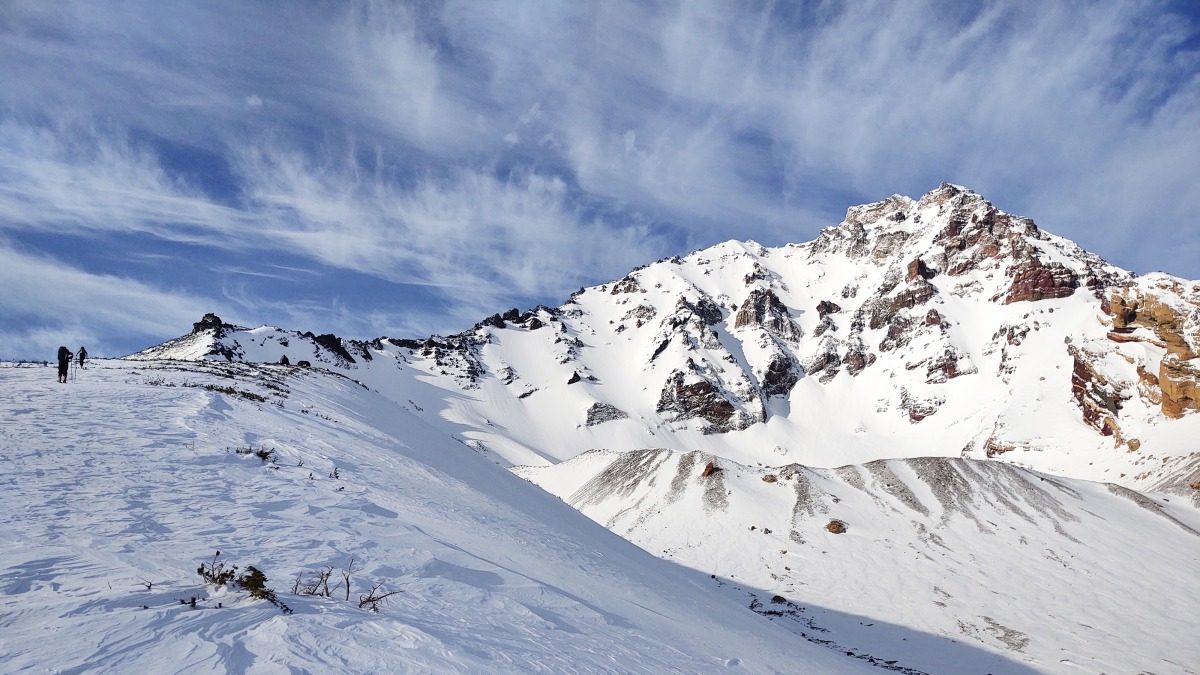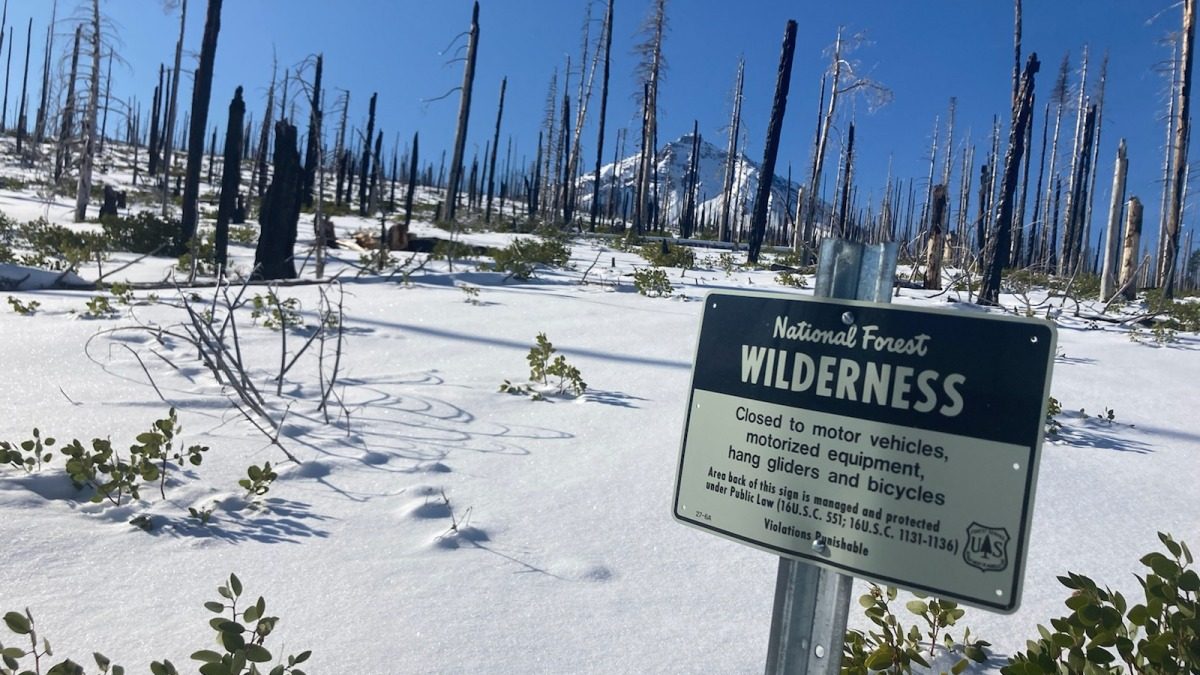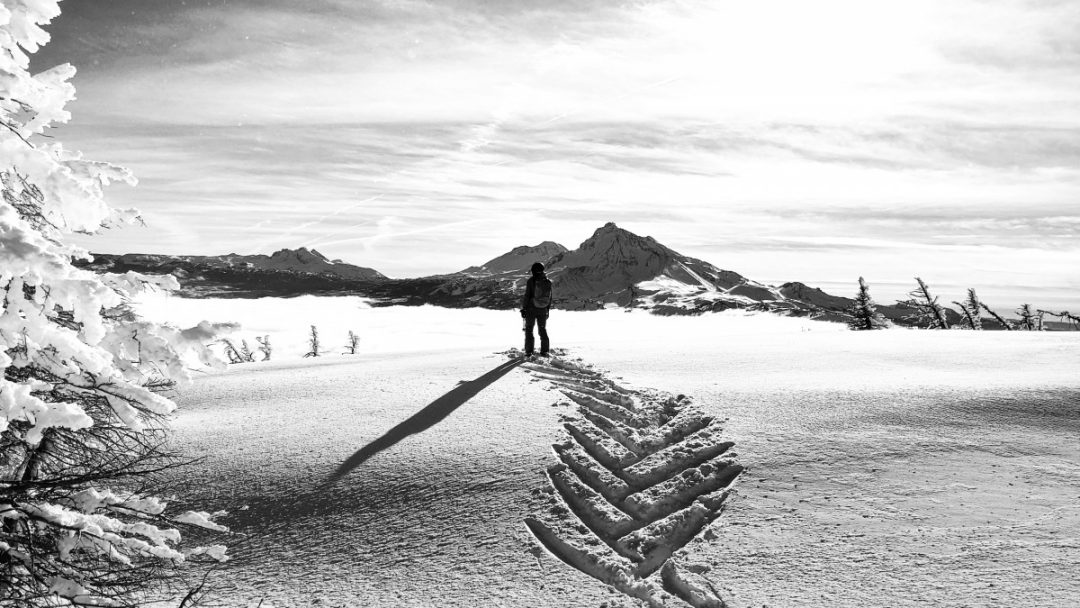WildSnow op-eds come from community members.
By John Sterling
Last Winter, I discovered a secret ski stash. With the Covid pandemic raging, and everyone seemingly discovering backcountry skiing simultaneously, my usual slopes were crawling with skiers. Parking lots were full before dawn, skin tracks felt like conga lines, and my ski pals got tired of my whining about how much better things were 20 years ago. For me, what once felt adventurous was becoming mere exercise.
So, I set out with one of those friends, determined to find new terrain. We stumbled upon a backcountry gem with reasonable access, excellent skiing, and so few people that we got anxious picturing another car at the trailhead. We returned from our outing feeling the bliss that comes from unexpected joy. Once the buzz wore off, I reflected on our good fortune having access to the vast expanse of federally-managed public lands to feed our adventure cravings.
If you ski in the US, you are most likely enjoying lands managed by four federal agencies: US Forest Service; National Park Service; Bureau of Land Management; and US Fish and Wildlife Service. This goes for backcountry and resort skiing alike. (There are 122 ski resorts on Forest Service lands, accounting for 60 percent of the alpine skiing capacity in the US). Data on backcountry skiing is sparse, but I’ll go out on a limb and say the best terrain is managed on our behalf by the federal government. We can choose to learn how these lands are managed, and to understand that we can influence that management to sustain the landscapes that make our backcountry experiences so memorable.
The federal government manages more than 25 percent of the US landmass: 640 million acres of National Parks, National Forests, Wildlife Refuges, and Wilderness Areas These lands include the Cascade volcanoes, the granite peaks of the Sierra Nevada, the wildlife-rich ranges of the Rockies, and the rugged Appalachians from the White and Green Mountains to the Blue Ridge.
What feels to most of us like a rich land inheritance, was once stewarded by the continent’s original inhabitants. For that reason, it’s worth studying this map of how the federal government systematically took lands from Native Americans, and this map, where you can learn more about the Native history of your favorite ski terrain.
The agencies that manage our ski stashes put surprisingly few restrictions on backcountry skiing. In most settings, there are no user fees, no trailhead quotas, and no camping restrictions for those who choose to overnight in the Winter. Locally, we pay only a small annual fee to the state to plow parking areas at trailheads. In that regard, backcountry skiing remains a nearly hassle-free way to experience the outdoors.
The primary ski-related regulations address motorized use. Several laws that govern public land management limit motorized use. The Wilderness Act prohibits any mechanized transport within a federally-designated Wilderness area. Congress can designate Wilderness areas on lands managed by any of the agencies. For example, much of Yosemite, Yellowstone, and Grand Teton National Parks are also designated Wilderness.
Forest Service
In the Western US, most backcountry skiers tour on Forest Service lands. The Forest Service is a complicated organization comprised of 155 National Forests across nine regions. Each forest holds several ranger districts. I live in Bend, Oregon, in the shadow of the 1.8-million-acre Deschutes National Forest, which includes three separate ranger districts. A District Ranger oversees each district and reports to the Forest Supervisor.
Why should you care about the Forest Service org chart? Because the National Forest Management Act (NFMA) gives individual Forest Supervisors the authority to manage lands based on local needs and citizen input. Each forest updates its management plan roughly every 20 years. During these plan updates, individuals have the opportunity to advocate for management changes that range from challenging logging operations to securing non-motorized Winter recreation zones. Because NFMA’s public involvement mandate gives skiers leverage in the forest planning process, that leverage is best wielded when skiers are organized. The Winter Wildlands Alliance does a great job supporting skiers in their efforts to influence Forest Service management decisions.
National Parks
The National Park Service Organic Act guides the management of the lands within the National Park units. The Park Service’s mandate is to manage the parks such that they are “unimpaired for the enjoyment of future generations.” As a result, group size in National Parks is limited, and most parks have strict regulations on motorized use for areas not designated as Wilderness. Entrance fees are commonplace in the National Parks.
Beyond these direct impacts on backcountry skiing, the federal agencies make decisions that have enormous indirect effects on the Winter environment. The Forest Service operates under a multiple-use mandate, which means they manage lands to benefit recreation and habitat, and provide cheap trees to the timber industry. Logging can directly impact ski terrain, but it also contributes to climate change – the greatest threat to our skiing future – by wiping out essential carbon sinks.

Traversing towards the SE Ridge of the North Sister in the Three Sisters Wilderness. Photo: John Sterling.
Bureau of Land Management
Though the Bureau of Land Management oversees relatively little ski terrain, the agency has an outsized impact on climate change. More than 25 percent of carbon emissions in the US come from burning fossil fuels extracted from public lands. The vast majority of that oil and gas drilling happens on BLM lands. The Biden Administration has placed a moratorium on new fossil fuel leasing on public lands, but it will take sustained advocacy to permanently wean the BLM off of energy development.
All of this is to say that skiers who love public lands can get involved in their management. And that civic engagement should extend beyond your backyard stashes. Navigating agency planning processes and understanding the laws that govern our public lands can be a chore, but is a small price to pay for the freedom and adventure these lands offer.
John Sterling grew up exploring public lands, and has spent the past 30 years trying to protect them.
Beyond our regular guest bloggers who have their own profiles, some of our one-timers end up being categorized under this generic profile. Once they do a few posts, we build a category. In any case, we sure appreciate ALL the WildSnow guest bloggers!



